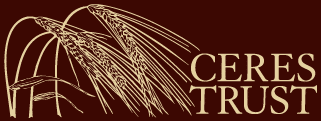Harnessing farm wildlife for weed management: Measuring suppression by rodents and insects
Principal Investigators:
Carmen Blubaugh, Department of Entomology, Purdue University
901 W. State St., West Lafayette, IN 4907
Email: [email protected]
Phone: (812)-340-1240
Dr. Ian Kaplan, Department of Entomology, Purdue University
Email: [email protected]
On-farm collaborator:
Phillip Swartz, Moraine View Farm, Wellington, IL
- Funding provided by the Ceres Trust: $9,950
- Project period: 2013-2014
- Report submitted: August 2014
View/Download Full Report in PDF Format
Project Summary
There are many ecological tools for managing weeds on organic farms, but a significant percentage are killed naturally every year by animals that feed on weed seeds. Crickets, ground beetles and small mammals are common, permanent residents of crop environments, and all contribute to weed seedbank reductions. To measure the ecosystem services that these weed seed predators provide, we built small fences with two gauge sizes and quantified seedbank reductions attributable to vertebrates and invertebrates separately by counting weeds germinated the following growing season. We tracked growth of common lambsquarters in fenced plots with natural seedbanks, and plots where we simulated a heavy seed rain the previous fall.
In plots with seed subsidies, lambsquarters counts were twice as high behind fences that excluded all seed predators as they were when insects or rodents had access. Seedling counts were lowest in unsubsidized plots where only insects had access- even lower than in completely open plots. We also compared the effects of seed predators and seed subsidies in plots planted with a rye/vetch cover crop the previous fall, but found very few weeds across all treatments. Our results suggest that that seed predators contribute significantly to weed suppression, but negative interactions between rodents and insects may slightly diminish their biological control services. Cover crops were far more important for weed suppression than seed predators, and because rodents and granivorous insects both use vegetative cover as overwintering habitat and refuge from predation, the use of cover crops and living mulches may synergize with the weed control services provided by wildlife.
